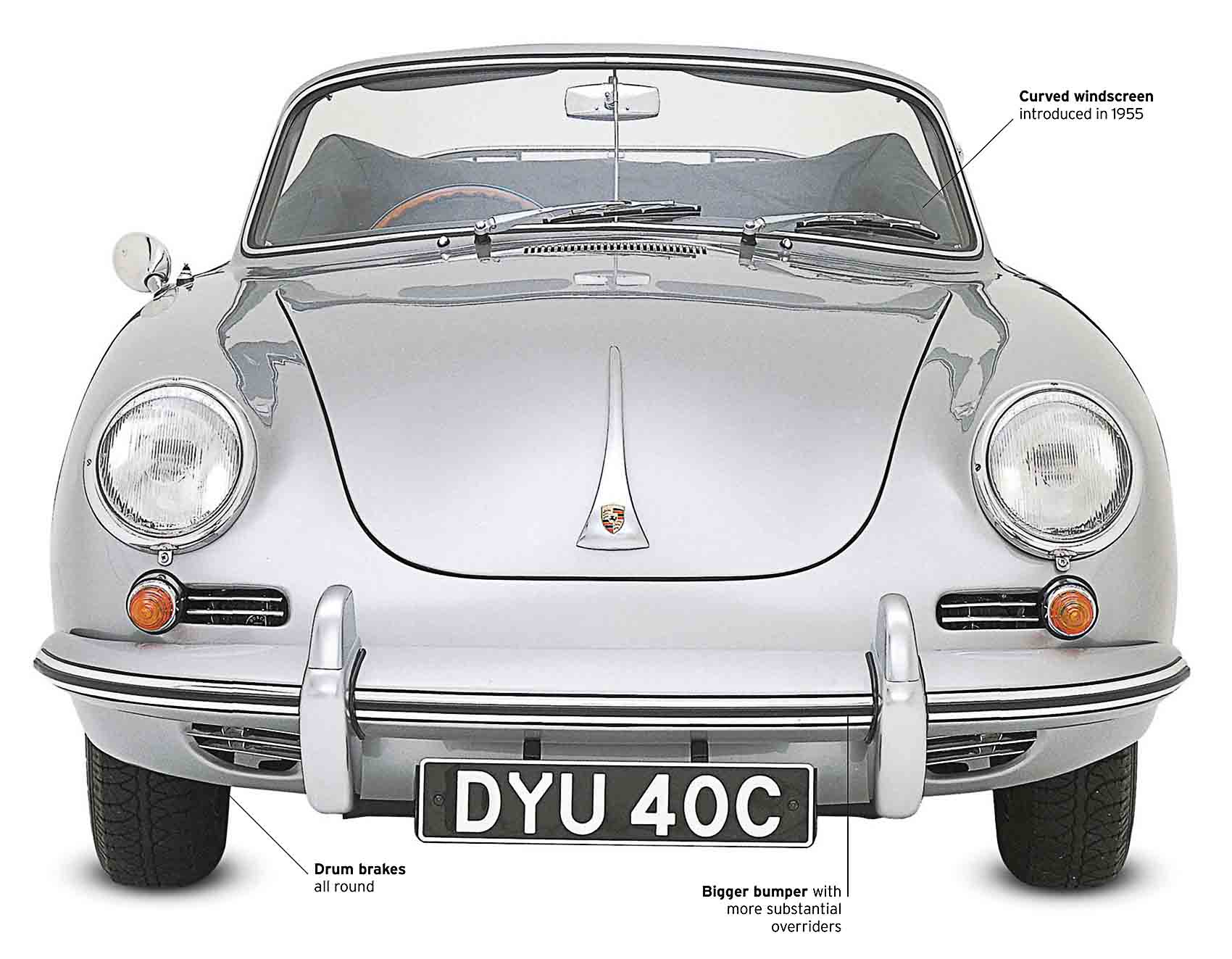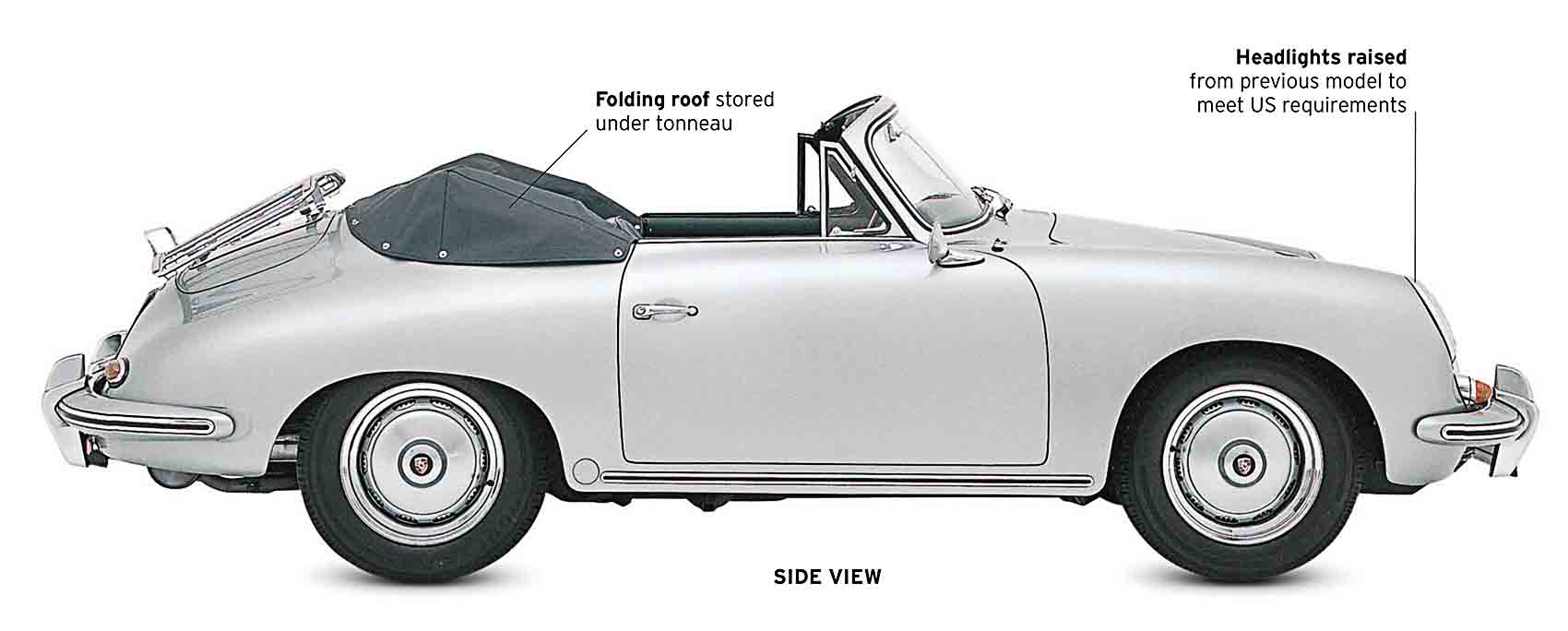
Baby GT Cars
While American muscle cars were trying to prove once and for all that there really was no substitute for cubic inches, in Europe there were mainstream and specialist car-makers which were trying to deliver speed through efficiency and light weight. The cars were fast, fun, and better suited to roads that were narrower and more winding than most of the roads Stateside. Sadly many were cottage-industry projects that fizzled out early, like Gilbern in the UK, although a few succeeded, such as Renault-Alpine, and established enduring reputations.
Porsche 356B, 1962

| Origin | Germany |
| Engine | 1,582 cc, flat-four |
| Top speed | 110 mph (177 km/h) |
Porsche started making VW-based sports cars in 1948. By the 1960s its 356 had matured into a fast, stylish machine with more power, more equipment, and greater comfort—though its handling could still be unpredictable. The 356 continued until 1963, when the 911 took over.

Volkswagen origins
Ferdinand Porsche had been in charge of the Volkswagen design, and 356 was based on the Volkswagen platform. As time went on it became more specialized, using fewer and fewer Volkswagen parts.

Styled for purpose
Porsche interiors were functional rather than luxurious. The 356B’s simple painted dashboard panel put three essential instruments right in front of the driver, the speedometer, the tachometer, and a combination oil temperature/fuel level gauge. The tachometer was in the centre, a characteristic Porsche carried over to the 911. The pedals were floor-hinged, and the gear lever mounted on the floor.

Flat-four family
The 356B was available with the 1.6-liter 616-series engine in 1600, Super 90, and 1600S models, the 1.6-liter 692-series in the 1600 Carrera GS, and the 2.0-liter 587-series four-cam engine in the Carrera 2 GS. All were flat-four boxer engines.
NSU Sport Prinz, 1959

| Origin | Germany |
| Engine | 598 cc, straight-two |
| Top speed | 76 mph (122 km/h) |
Italian styling house Bertone worked wonders to create this winsome, little coupe for the bravely independent NSU, based on its Prinz saloon. A light, but tiny, two-cylinder engine meant it was never all that fast. Even so, more than 20,000 were sold in the 1960s.
Gilbern GT, 1959

| Origin | UK |
| Engine | 1,622 cc, straight-four |
| Top speed | 100 mph (161 km/h) |
Wales’s only successful car-maker used a tubular steel chassis, attractive fibreglass body, and high-quality interiors to sell this handsome MGA and MGB-powered coupé. The Genie model and the Invader model followed, both with Ford V6 power. Total production of all types amounted to only just over 1,000 cars.
Renault-Alpine A110 Berlinette, 1963

| Origin | France |
| Engine | 1108 cc, straight-four |
| Top speed | 132 mph (212 km/h) |
Jean Rédélé was a rally driver and Renault dealer, and built his own cars from 1956 using Renault mechanical inside lightweight, fibreglass bodies. The A110 used Renault 8 or 16 engines and was fast but hard to handle. It made a great rally car.
Saab Sonett, 1966

| Origin | Sweden |
| Engine | 1,498 cc, V4 |
| Top speed | 100 mph (161 km/h) |
Front-wheel drive, a freewheel, and a column gear-change were unusual features derived from the Sonett’s saloon parent. The first 258 built had a peppy, three-cylinder, two-stroke engine, but most contained larger Ford V4 engines. The neat, low-drag body in fibreglass gained concealed headlights on the 1970 Sonett III.
It is a quote. The Classic Car Book – The Definitive Visual History 2016





No Comments